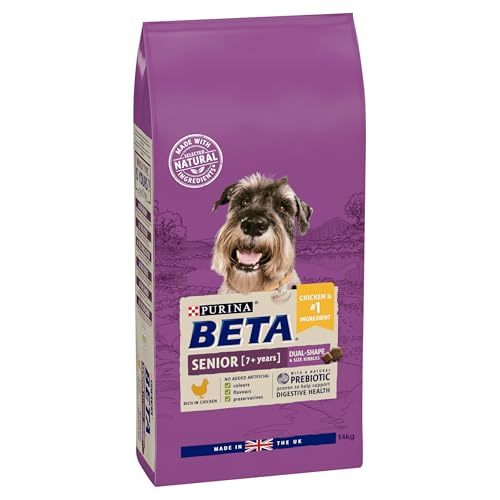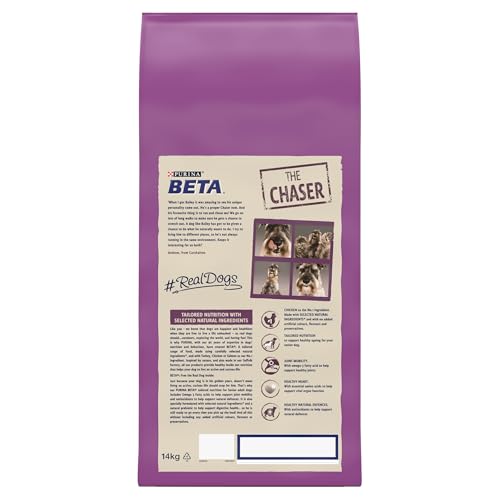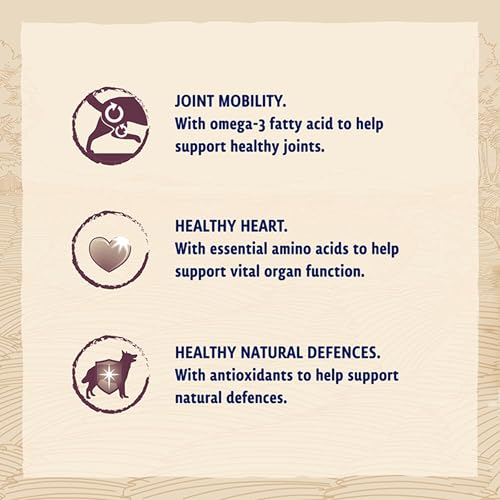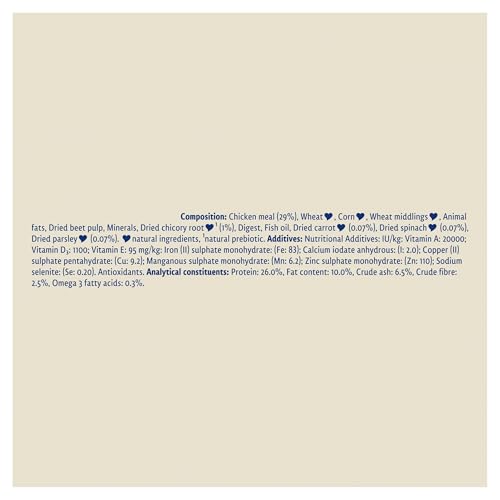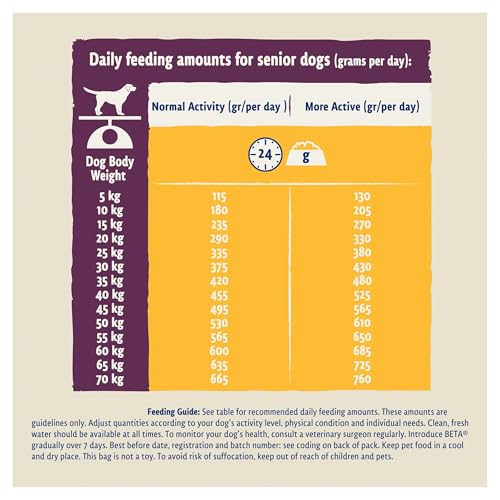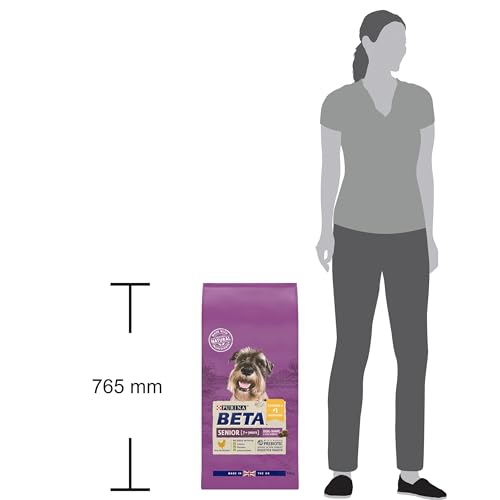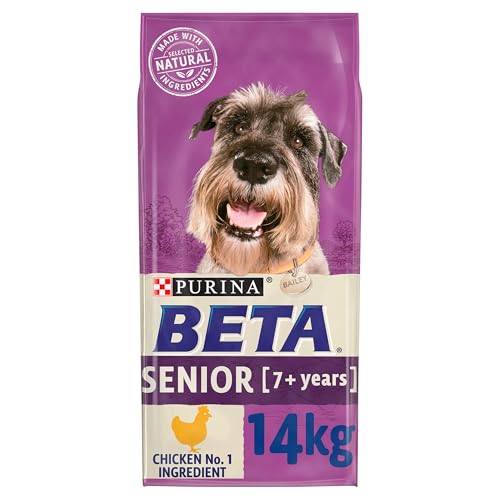

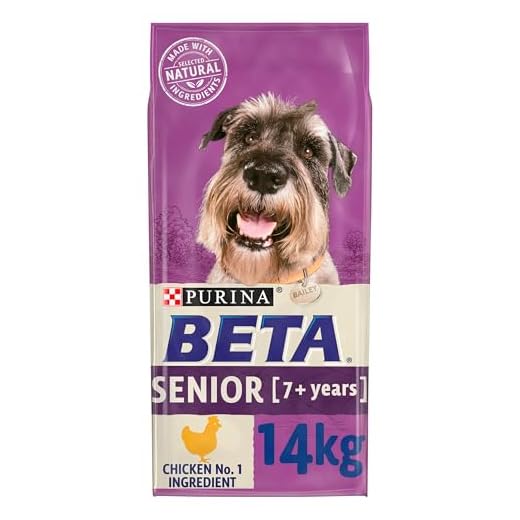


Choosing the best dog food for small to medium dogs can feel like navigating a maze. I’ve spent countless hours researching and testing various options to ensure my furry friend gets the best nutrition possible. In this article, I’ll share my findings and personal experiences to help you make an informed decision for your beloved pet.
Small to medium-sized dogs have unique dietary needs that differ from their larger counterparts. They require a balanced diet that provides enough energy without leading to weight gain. The right dog food can make a significant difference in their health, longevity, and overall quality of life.
Throughout my journey, I’ve discovered several key factors that distinguish high-quality dog food. Ingredients, nutritional balance, and brand reputation are just a few elements to consider. I’ll delve into these aspects in detail, providing you with practical insights and recommendations based on my extensive research and firsthand experience.
Whether you’re a new dog owner or looking to switch up your pet’s diet, this guide will offer valuable information to ensure your small to medium dog thrives on the best food available. Let’s dive into the specifics of what makes the best dog food and how to choose the perfect one for your canine companion.
Nutritional Requirements for Small to Medium-Sized Dogs
As a devoted dog owner, ensuring my small to medium-sized dog receives the right nutrition is paramount. These dogs have unique dietary needs compared to their larger counterparts, making it essential to understand and cater to these specific requirements. Balancing their diet not only supports their overall health but also contributes to a longer, happier life.
One of the primary considerations is the energy level and metabolism of small to medium dogs. These breeds often have higher metabolic rates, meaning they burn calories quickly and need nutrient-dense food to maintain their energy levels throughout the day. Providing the right blend of proteins, fats, and carbohydrates is crucial in meeting these demands.
Essential Nutrients and Their Sources
Small to medium-sized dogs require a carefully balanced diet rich in various essential nutrients. Here’s a breakdown of what their diet should include:
- High-Quality Protein: Proteins are vital for muscle development and repair. Opt for sources such as chicken, beef, lamb, or fish. These ingredients should be listed at the top of the ingredient list in their dog food.
- Healthy Fats: Fats are a concentrated energy source and are crucial for maintaining a healthy coat and skin. Look for dog foods containing fish oil, flaxseed, or chicken fat.
- Carbohydrates: Carbs provide the necessary energy, especially for active dogs. Good sources include sweet potatoes, brown rice, and oats.
- Vitamins and Minerals: These are essential for immune function and overall health. Ingredients like fruits and vegetables can supply these nutrients, along with added supplements in commercial dog foods.
- Fibre: Fibre aids in digestion and helps maintain a healthy weight. Ingredients like beet pulp, pumpkin, and whole grains are beneficial.
Understanding these nutritional needs helps in selecting the best food for small to medium dogs. By focusing on high-quality ingredients and a balanced nutrient profile, you can ensure your furry friend stays healthy and energetic. Regularly consulting with a veterinarian can also provide guidance tailored to your dog’s specific health requirements.
How to Select the Best Dog Food for Your Pet’s Age
Choosing the appropriate food for your dog can be a daunting task, especially considering the various stages of their life. From playful puppies to senior dogs, each phase requires different nutritional needs to support their growth, energy levels, and overall health. It’s crucial to understand these needs to ensure your furry friend gets the right nourishment.
As your dog ages, their dietary requirements change. Puppies need more protein and fat to support their rapid growth and high energy levels, while adult dogs require a balanced diet to maintain their health. Senior dogs, on the other hand, may need fewer calories but more fibre and certain nutrients to support aging joints and digestion. Here’s how to choose the right food for your dog’s age.
Understanding Nutritional Needs at Different Life Stages
Puppy StageIn the early stages of life, puppies grow quickly and have high energy levels. Therefore, their diet needs to be rich in protein and fats to support muscle development and overall growth. Look for foods labeled specifically for puppies, as these are formulated to meet their unique needs. These formulas often contain higher levels of DHA, an omega-3 fatty acid important for brain and eye development.
Adult DogsOnce your dog reaches adulthood, their nutritional needs stabilise. Adult dogs require a balanced diet that includes proteins, fats, carbohydrates, vitamins, and minerals. It’s essential to choose a food that maintains their health and energy without leading to weight gain. Ingredients should be high-quality, and it’s often beneficial to avoid unnecessary fillers and artificial additives.
Senior DogsAs dogs age, their metabolism slows down, and they may become less active. Senior dog foods are formulated to meet these changing needs, typically containing fewer calories to prevent obesity, more fibre for digestion, and added nutrients like glucosamine and chondroitin to support joint health. Additionally, antioxidants can help boost their immune system.
Key Considerations for All Ages
- Quality Ingredients: Always look for high-quality ingredients with named meat sources and avoid foods with generic meat by-products.
- Specific Needs: Consider any specific health issues your dog might have, such as allergies or sensitivities, and choose a diet that addresses these concerns.
- Consult Your Vet: Regular check-ups with your vet can provide tailored nutritional advice based on your dog’s individual health and age.
By understanding and catering to your dog’s nutritional needs at each stage of their life, you can ensure they stay healthy and happy. Remember, the best diet is one that is tailored to your dog’s age, health status, and lifestyle.
Grain-Free vs. Grain-Inclusive: What’s Best for Small to Medium Dogs?
When it comes to choosing the right food for your small or medium dog, the debate between grain-free and grain-inclusive diets is a significant consideration. I’ve spent countless hours researching and consulting with veterinarians to understand which option might be better suited for my furry friends. Both types of diets have their own sets of benefits and potential drawbacks, making it crucial to weigh them carefully.
Understanding the specific needs of your dog is essential. Small to medium dogs have different nutritional requirements compared to larger breeds, and factors like age, activity level, and health conditions also play a role. In this context, let’s delve deeper into the pros and cons of grain-free and grain-inclusive diets to help you make an informed decision.
Grain-Free Diets: Benefits and Considerations
Grain-free diets have gained popularity in recent years, primarily due to concerns about food allergies and sensitivities in dogs. These diets eliminate grains like wheat, corn, and soy, which are often considered common allergens. Instead, they use alternative carbohydrate sources such as sweet potatoes, peas, and lentils. Here are some benefits and points to consider:
- Allergy Management: For dogs with specific grain allergies, a grain-free diet can alleviate symptoms such as itching, gastrointestinal issues, and skin problems.
- Higher Protein Content: Grain-free foods often contain a higher percentage of protein from meat, which can be beneficial for active dogs requiring more energy.
- Potential Risks: There have been concerns about a possible link between grain-free diets and heart disease in dogs, particularly due to the use of certain legumes like peas and lentils.
Grain-Inclusive Diets: Pros and Cons
On the other hand, grain-inclusive diets incorporate grains such as rice, barley, and oats. These grains can provide valuable nutrients and are generally well-tolerated by most dogs. Let’s explore the advantages and potential drawbacks of grain-inclusive diets:
- Nutrient-Rich: Grains can offer essential nutrients, including fibre, vitamins, and minerals, contributing to overall health and digestion.
- Cost-Effective: Grain-inclusive foods tend to be more affordable, making them a practical choice for many dog owners.
- Digestive Health: Most dogs digest grains well, but it’s important to monitor for any signs of intolerance, such as gastrointestinal upset or skin issues.
In conclusion, the best diet for your small to medium dog depends on their individual needs and any specific health concerns. Consulting with your veterinarian can provide tailored advice to ensure your dog’s diet supports their overall health and wellbeing. Whether you opt for grain-free or grain-inclusive, the key is to choose high-quality, balanced nutrition that meets your dog’s unique requirements.
Wet vs. Dry Dog Food: Which is Better for Small to Medium Breeds?
Choosing the right food for my small to medium-sized dog can be a daunting task. I’ve often found myself torn between wet and dry options, each claiming unique benefits. Understanding the advantages and disadvantages of both types is crucial in making an informed decision for my furry friend’s health and well-being.
Wet dog food, also known as canned food, often appeals to dogs due to its strong aroma and rich flavour. It contains a high moisture content, which can be beneficial for dogs that do not drink enough water. This type of food is usually easier to chew, making it a suitable choice for older dogs or those with dental issues.
Pros and Cons of Wet and Dry Dog Food
Wet dog food comes with several advantages, but it also has its drawbacks:
- Hydration: The high water content helps keep my dog hydrated, which is especially important in hot weather or for dogs with certain medical conditions.
- Palatability: Dogs often find wet food more appetising, which can be helpful for picky eaters or dogs with reduced appetite.
- Cost: Wet food tends to be more expensive and has a shorter shelf life once opened.
- Storage: Cans are bulky and require more storage space compared to dry food bags.
Dry dog food, on the other hand, has its own set of benefits and disadvantages:
- Dental Health: The crunchy texture of dry kibble can help reduce plaque and tartar buildup, promoting better oral hygiene.
- Convenience: Dry food is easier to measure, store, and serve, making it a practical choice for busy pet owners.
- Cost-Effective: Generally, dry food is more affordable and has a longer shelf life once opened.
- Hydration: It lacks the moisture content of wet food, so ensuring my dog drinks plenty of water is essential.
Ultimately, the choice between wet and dry food depends on my dog’s specific needs and preferences. I might even consider a combination of both to ensure a balanced diet, taking advantage of the benefits each type offers. Consulting with a veterinarian can also provide valuable guidance tailored to my dog’s unique health requirements.
Best Dog Food Brands for Small to Medium Dogs
Choosing the right dog food for small to medium-sized dogs can be a daunting task. With so many options available, it’s essential to find a brand that not only meets your pet’s nutritional needs but also keeps them happy and healthy. Over the years, I’ve tried various brands, and some have stood out for their quality and results.
In this guide, I’ll share some of the best dog food brands that I have found to be particularly well-suited for small to medium dogs. These brands are known for their high-quality ingredients, balanced nutrition, and the positive feedback they receive from dog owners and veterinarians alike.
Highly Recommended Dog Food Brands
- Royal Canin: This brand offers specialised formulas tailored to the specific needs of different breeds and sizes. Their small breed formula, for example, is designed to support the unique dietary requirements of smaller dogs, including their energy levels and digestive health.
- Hill’s Science Diet: Known for its scientifically-backed recipes, Hill’s Science Diet provides balanced nutrition with high-quality ingredients. Their small and toy breed options focus on promoting a healthy coat, strong immune system, and optimal energy levels.
- Blue Buffalo: Blue Buffalo prides itself on using natural ingredients with real meat as the first ingredient. Their Life Protection Formula for small breeds includes essential proteins and carbohydrates to meet the higher energy needs of smaller dogs, along with omega 3 & 6 fatty acids for a healthy coat.
- Merrick: With a reputation for high-quality, grain-free recipes, Merrick’s dog food is a great choice for pets with food sensitivities. Their small breed recipes are crafted with deboned meat, vegetables, and whole grains to provide complete nutrition.
When selecting dog food, it’s crucial to consider your dog’s specific needs, including any dietary restrictions or health conditions. These brands offer a range of options that cater to various requirements, ensuring that your small to medium-sized dog gets the best possible nutrition.
Homemade Dog Food Recipes for Small to Medium Dogs
As a dog owner, I’ve always been concerned about what my furry friend eats. I wanted to ensure that my small to medium-sized dog receives a balanced, nutritious diet without any harmful additives. This led me to explore homemade dog food recipes. Preparing food at home not only gives me control over the ingredients but also allows me to tailor meals to meet my dog’s specific dietary needs.
Over the years, I have tried and tested various recipes, and I’m excited to share some of the best ones that my dog absolutely loves. These recipes are simple, nutritious, and designed to provide the essential nutrients that small to medium dogs require.
Chicken and Vegetable Delight
This recipe is a favourite in my household. It’s packed with protein and vitamins, making it perfect for active dogs.
Ingredients:
- 500g boneless, skinless chicken breast
- 1 cup of chopped carrots
- 1 cup of peas
- 1 cup of cooked brown rice
- 2 tablespoons of olive oil
Instructions:
- Cook the chicken breast thoroughly, then chop it into small, bite-sized pieces.
- Steam the carrots and peas until tender.
- Mix the chicken, vegetables, and brown rice together in a large bowl.
- Drizzle with olive oil and mix well.
- Allow the mixture to cool before serving.
Beef and Sweet Potato Mix
This hearty recipe is ideal for dogs who need a bit more energy. It combines the richness of beef with the nutritional benefits of sweet potatoes.
Ingredients:
- 500g lean ground beef
- 1 large sweet potato, peeled and diced
- 1 cup of spinach, chopped
- 1/2 cup of quinoa
- 1 tablespoon of coconut oil
Instructions:
- Cook the ground beef in a skillet until it is no longer pink. Drain any excess fat.
- Boil the diced sweet potato until soft, then mash it.
- Cook the quinoa according to package instructions.
- Mix the beef, sweet potato, spinach, and quinoa in a large bowl.
- Add the coconut oil and mix thoroughly.
- Let the food cool before serving it to your dog.
Fish and Rice Dinner
For a lighter meal that’s still packed with nutrients, this fish and rice dinner is perfect. It’s great for dogs with sensitive stomachs.
Ingredients:
- 400g white fish fillets (like cod or haddock)
- 1 cup of cooked white rice
- 1 cup of green beans, chopped
- 1 carrot, shredded
- 1 tablespoon of fish oil
Instructions:
- Bake or steam the fish until it flakes easily with a fork.
- Cook the green beans until tender.
- Mix the fish, rice, green beans, and shredded carrot in a bowl.
- Add the fish oil and mix well.
- Let the food cool before serving.
These recipes have been a hit with my dog, providing not only delicious meals but also the nutrition needed for a healthy, happy life. Preparing homemade dog food ensures I know exactly what my dog is eating and allows me to adjust the recipes to suit his preferences and dietary requirements.
Common Ingredients to Look for in Quality Dog Food
When selecting food for small to medium-sized dogs, it’s crucial to pay attention to the ingredients list. A well-balanced diet can significantly impact their overall health, energy levels, and longevity. I always ensure the dog food I choose contains high-quality components that provide the essential nutrients my dog needs.
Identifying the right ingredients can be daunting, but understanding what to look for can simplify the process. Here are some key ingredients that signify a nutritious and beneficial dog food.
Essential Components of Quality Dog Food
- Animal Protein: High-quality dog food should have a primary source of animal protein such as chicken, beef, lamb, or fish. Protein is vital for muscle development and repair.
- Whole Grains: Ingredients like brown rice, barley, and oats provide carbohydrates for energy and are also a source of fibre, which aids in digestion.
- Vegetables and Fruits: Including ingredients like sweet potatoes, carrots, blueberries, and apples can offer vitamins, minerals, and antioxidants that support the immune system.
- Healthy Fats: Sources of fat such as chicken fat or fish oil are essential for a healthy coat and skin. Omega-3 and Omega-6 fatty acids also promote cognitive function.
- Probiotics and Prebiotics: These ingredients help maintain a healthy gut flora, improving digestion and nutrient absorption. Look for ingredients like chicory root or specific probiotic strains.
Understanding these common ingredients ensures that my furry friend receives a balanced diet that caters to their specific needs. Choosing dog food with these components can contribute significantly to their overall well-being.
Tips for Transitioning Your Dog to a New Food
Switching your small to medium-sized dog to a new food requires careful planning and consideration to ensure a smooth transition. Follow these tips to help your furry friend adjust:
- Gradual Transition: Introduce the new food gradually over 7-10 days by mixing it with the old food. Start with a small amount of the new food and gradually increase the proportion while decreasing the old food.
- Monitor Digestive Health: Keep an eye on your dog’s stool during the transition period. Loose stools or diarrhea may indicate that the new food isn’t agreeing with your dog. If this occurs, slow down the transition process.
- Stay Consistent: Once you’ve fully transitioned to the new food, stick with it for at least a few weeks before considering any further changes. Consistency is key for your dog’s digestive health and overall well-being.
- Pay Attention to Behaviour: Notice any changes in your dog’s behaviour or energy levels after switching to the new food. While some adjustment is normal, significant changes may indicate a problem.
- Seek Veterinary Advice: If you have any concerns or if your dog experiences persistent digestive issues during the transition, consult your veterinarian. They can provide guidance tailored to your dog’s specific needs.
By following these tips and being patient, you can help your small to medium-sized dog smoothly transition to their new food, ensuring they receive the nutrition they need for a healthy and happy life.
Best Dog Food For Small To Medium Dogs
Features
| Part Number | 12272439 |
| Model | 12272439 |
| Color | transparent |
| Is Adult Product | |
| Release Date | 2015-06-16T00:00:01Z |
| Size | 14 kg (Pack of 1) |
| Language | Italian |
| Price history for PRO PLAN Medium Adult Dry Dog Food | |
|---|---|
|
Latest updates:
|
|
Features
| Size | 5 kg (Pack of 1) |
Features
| Part Number | 12231689 |
| Model | 12531980 |
| Color | transparent |
| Release Date | 2014-05-23T00:00:01Z |
| Size | 1 count (Pack of 1) |
Features
| Part Number | 12274093 |
| Model | TP-7613035152908_Vendor |
| Release Date | 2015-08-24T00:00:01Z |
| Size | 11 kg (Pack of 1) |
| Language | Spanish |
| Price history for PRO PLAN Hypoallergenic Veterinary Diet | |
|---|---|
|
Latest updates:
|
|
Features
| Part Number | HARRLR-18 |
| Model | HARRLR-18 |
| Color | Lamb |
| Release Date | 2019-10-17T00:00:01Z |
| Size | 18 kg (Pack of 1) |
| Price history for Harringtons Lamb & Rice Dry Dog Food | |
|---|---|
|
Latest updates:
|
|
Features
| Part Number | 8710255174761 |
| Model | 8710255174761 |
| Size | 12 kg (Pack of 1) |
| Language | English |
Features
| Is Adult Product | |
| Release Date | 2025-05-17T00:00:01Z |
| Language | English |
| Number Of Pages | 213 |
| Publication Date | 2025-05-17T00:00:01Z |
Features
| Part Number | 501012 |
| Model | 501012 |
| Color | brown |
| Release Date | 2019-12-23T00:00:01Z |
| Size | 14 kg (Pack of 1) |
Q&A:
What is the best dog food for small to medium dogs?
There are several excellent options for small to medium dogs, but it ultimately depends on your dog’s specific needs and preferences. Some popular choices include Royal Canin, Hill’s Science Diet, Blue Buffalo, and Purina Pro Plan.
How do I choose the right dog food for my small to medium dog?
When choosing dog food, consider factors such as your dog’s age, activity level, dietary restrictions, and any health issues. Look for high-quality ingredients, balanced nutrition, and consult with your vet for recommendations tailored to your dog’s individual needs.
Should I opt for dry or wet dog food for my small to medium dog?
Both dry and wet dog food can be suitable for small to medium dogs. Dry food is often more convenient and helps maintain dental health, while wet food can provide additional moisture and can be more palatable for picky eaters. Some dog owners choose to mix both for variety.
Are there any specific ingredients I should look for or avoid in dog food for small to medium dogs?
Look for dog foods with high-quality protein sources like chicken, beef, or fish. Avoid artificial preservatives, flavours, and fillers like corn or soy. It’s also important to watch out for common allergens such as wheat or dairy if your dog has sensitivities.











